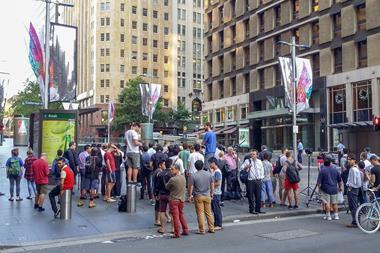Argo Group’s Adam Seager on the challenges of maintaining corporate cohesion in a more virtual working environment
COVID-19 has opened up opportunities to rethink the workforce model for a lot of firms. Enforced remote working has accelerated investment in enabling technology and will continue to do so as part of a broader pick-up of investment in, and adoption of, new technology.
This change of pace brings both threats and opportunities over the medium-term.
As firms move to a more dispersed workforce, does this threaten that sense of corporate identity and common purpose that is implicit in the social interaction of the office, and if so, how does that impact the sense of place in the wider world?
Seager believes the challenge of maintaining corporate cohesion should be high on the ‘business risk’ agenda as organisations prepare for a hybrid working model.
“How do you reengage with that dispersed workforce to create a sense of corporate cohesiveness, unity and purpose when most of the implicit triggers that drive true belonging and behaviour will disappear? How do you empower your people to enact that purpose if it’s no longer implicit?” asks Seager.
With many organisations still in crisis mode as a result of the global pandemic, not enough attention is being paid to these longer term consequences, he worries.
As we emerge from being tactical and defensive and start focusing on how the business is evolving longer term, we need to think beyond technology and logistics about what this means more holistically.
“The truth is that for most firms the pandemic took them far out of their ball park, and their crisis management frameworks were stretched,” says Seager. ”The prolonged nature of this event has seen senior management pulled into iterative cycles of disruption and response, which breaks the strategic thinking and turns the business into an uncertain environment.”
“Crisis management requires senior managers to engage with their employees on the ‘now’ and work to adapt and pull together. But when that situation has been going on for 12 months plus, you risk losing direction and context around what the business is there for.”
That loss of context reduces situational awareness, knowing your place in an ever-changing world and being able to identify and respond to evolving threats and opportunities.”
Creating a digital hub
Creating an ecosystem that caters for remote, flexible working, social and customer engagement, innovation, community, personal development and purpose-driven empowerment is a complex matter.
Executives need to be thinking strategically about how to maintain and evolve their corporate identity in a virtual world. Do organisations now need to create corporate ‘digital hubs’?
“Creating a digital hub that has a sense of community is key, but there are some real risks to getting it wrong,” says Seager. “Keeping people informed and aligned becomes a challenge, failing to address that challenge could give rise to a silo working mentality, dominance of subculture or even a counter culture, inconsistent external messaging, reduced situational awareness and response to the changing environment, and loss of knowledge transfer.”
“Unravelling the implicit components borne out of proximity that underpin corporate cohesion requires an understanding of how leadership, psychology, technology and logistics impacts corporate communities.
“It’s a complex question,” he continues. ”What should the leadership etc look like in a dispersed or hybrid model? What do we need to continue to do face-to-face? Is it creativity, external party interaction, team building?”
Some studies suggest people are working longer hours and producing less work.
”The process of just maintaining communication is eating up the day and that much heralded work/life balance is falling prey to a blurring of the lines, enabled by 24/7 connectivity,” says Seager.
Juggling these issues will require financial investment, new skill sets and tools to create these hybrid businesses, he thinks.
”We’re going to have to embrace new forms of social interaction. How do we reinvent the head office in a virtual environment so that we convey that iconic embodiment of the business?”
This will be an iterative process within the tail of COVID-19 disruption, but the firms that get it right will be diverse, adaptive, technology positive and sustainable.
Adam Seager is chief risk officer at Argo Group




















No comments yet